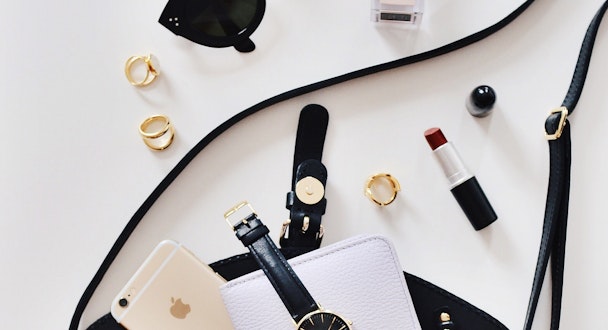The changing face of the luxury consumer
The pool of luxury consumers is growing - and changing demographically. Maria Bain, head of audience intelligence at iCrossing UK, looks at the impact of the pandemic on luxury audiences, and how brands can engage with this historically complex target audience.

iCrossing on the evolution of the luxury sector
The pandemic caused the luxury consumer segment to grow. As a result, it has become more diverse in every way; high net worth individuals (HNWIs) and ultra-high net worth individuals (UHNWIs) are now younger and less likely to be from inherited wealth in the West. This diversity is creating new demands on luxury brands, even how they are defined.
Luxury brands need to reframe both their messaging and the channels they use to communicate with this audience. If they get this right, the opportunity to develop a powerful new customer base is huge.
The ‘luxury consumer’ is a more diverse concept than ever
The profile of the 'luxury consumer’ as Western, older, and upper-class has been challenged in the past decade. The pandemic has disrupted this further. This younger cohort is more diverse, and very different to the more traditional ‘wealthy’ group in ethnicity, gender, political views, and personal values.
Diversity and fragmentation is impacting the very way luxury is defined.
The definition of luxury has long been consistent: products made from the finest materials, highly-priced, obvious in quality, often with a highly visible brand and sold only in exclusive venues.
But a Hearst survey found that age is a key factor in new definitions. Younger consumers use more descriptors for what they consider to be luxury. While all ages are swayed by traditional descriptors, younger groups are more likely to associate luxury with beautiful packaging and prestige over category and price point.
To this group, virtually anything, and any category, can be deemed luxury, from H&M designer collaborations with Sonia Rykiel or Lanvin, to a pair of limited-edition Nike trainers. Younger customers want their purchases to help define who they are and their own personal values.
How they discover luxury brands is different too; younger audiences are six times more likely to discover new luxury brands through influencers and three times more likely to follow an influencer than a branded account.
To reach this new audience, luxury marketing must evolve. Not being accessible is no longer an option.
The emergence of conscious decision making
Hearst’s annual 'Positively' survey found consumers looking ahead with optimism. This sentiment is furthering the rise of ‘conscious capitalism’, which influences the brands people buy. 57% say they are more likely to purchase from brands that share their personal values.
This is particularly true of younger demographics who are far more likely to consider social and environmental impact and values. According to Morgan Stanley, Millennials are twice as likely to invest in companies with social or environmental goals.
The focus of all luxury shoppers on conscious purchase decisions is accelerating three key trends in the sector.
1. Sustainability
Wastage of materials sourced from far-flung locations was once deemed the essence of luxury, while luxury experiences in dining, travel, and leisure still often result in excessive waste and carbon emissions. But these practices are under increased scrutiny. Conspicuous symbols of wealth and success are becoming less attractive. Covid has proved an inflection point; 63% of HNWIs say they have recycled more since the start of the pandemic. A quarter bought more sustainable products.
We expect ultra-sustainable products that are still made from the finest materials and have premium pricing to become luxury no matter what their category, as consumers reflect their personal values in purchases.
2. Brand responsibility
Consumers want to understand brands’ attitudes toward workers, fair wages, local production, charitable giving, disadvantaged people, and many other things. Half of HNWIs say knowing a brand has sub-standard labor conditions would impact their purchase decision.
Luxury buyers are striving to build 'good' into their consumption. With less pressure on cost and greater focus on provenance of materials, luxury brands should have a strong narrative. If high price purely means high mark-up, those brands will be exposed.
3. Second-hand luxury
Resale, re-commerce, luxury consignment or pre-loved: no matter what it’s called, the second-hand luxury market has grown in recent years, with a 65% increase between 2017 and 2021 v 12% growth in first-hand luxury over the same period (Bain).
48% of younger HNWIs buy more second-hand fashion items now than a year ago. This audience has a growing demand for high-end fashion accessories at lower prices. With a more diverse group of potential customers, the marketing approach of luxury brands must continue to evolve.
Brands are responding. Burberry and Gucci have developed marketing arrangements with second-hand seller The RealReal. Luxury fashion e-rental business Hurr Collective went physical, partnering with Selfridges. Since launching in February 2020, the brand has seen membership grow 850%.
The new luxury consumer has a different concept of what luxury should be and new personal values. Luxury brands that aren’t looking at this audience today should remember that over the next decade, a great wealth transfer will occur with millennials inheriting baby boomer wealth. By 2030, millennials will hold five times as much wealth as they do today.
The definition of 'luxury' is no longer in control of luxury brands. New audiences, sales channels and empowered consumers have a shared responsibility in this, if not democratizing it entirely. Many brands have already changed their behavior and relaxed control, with many luxury brands moving into new categories and so-called ‘brandalism’.
Few categories are seeing so much change. Thanks to the pandemic, the future for luxury has become a whole lot closer. Brands that don’t adapt now won’t survive.
Content by The Drum Network member:

iCrossing UK
We are iCrossing. We build seamless digital experiences that influence consumers to act. With unrivaled access to Hearst’s powerful consumer insights, we uncover...
Find out more
